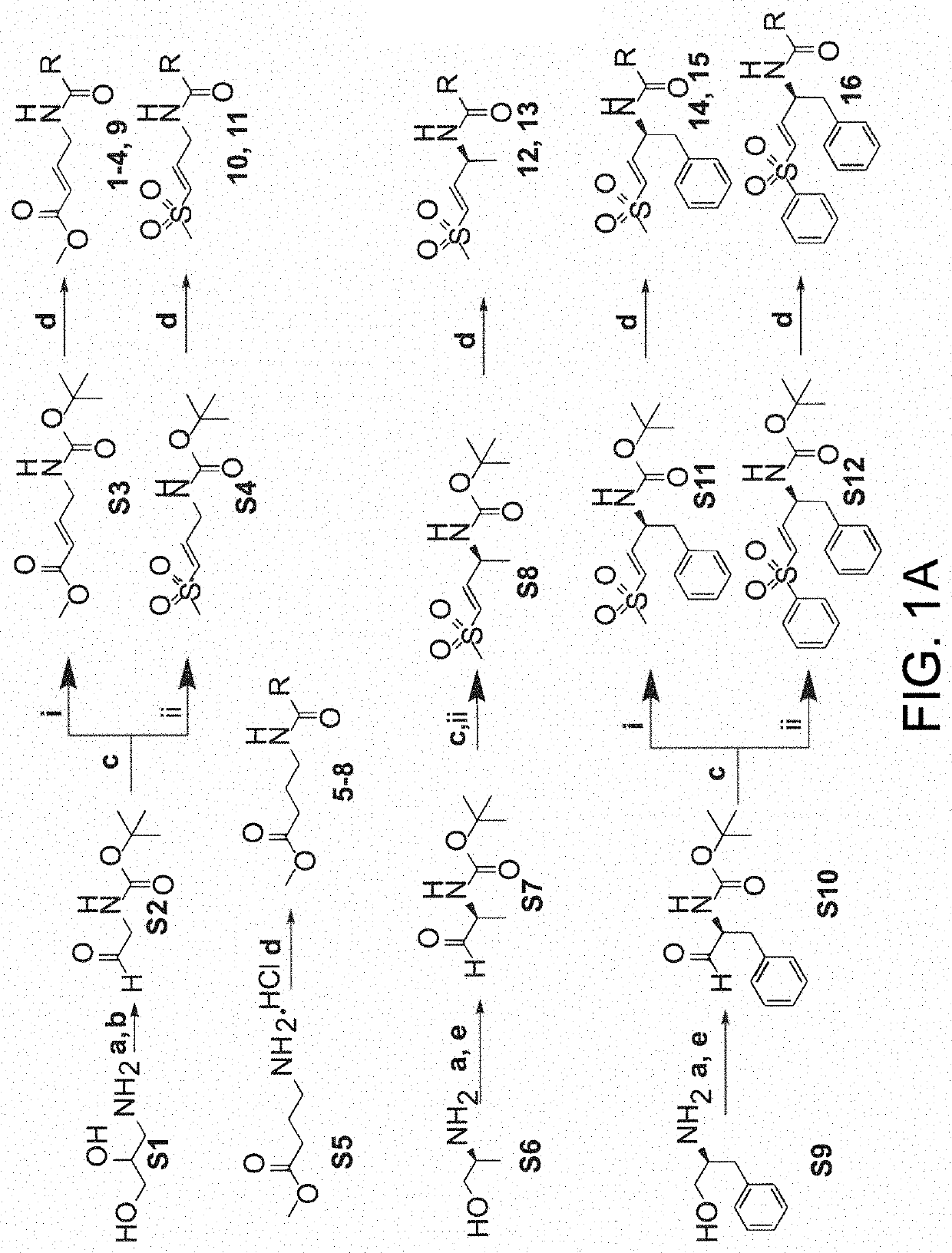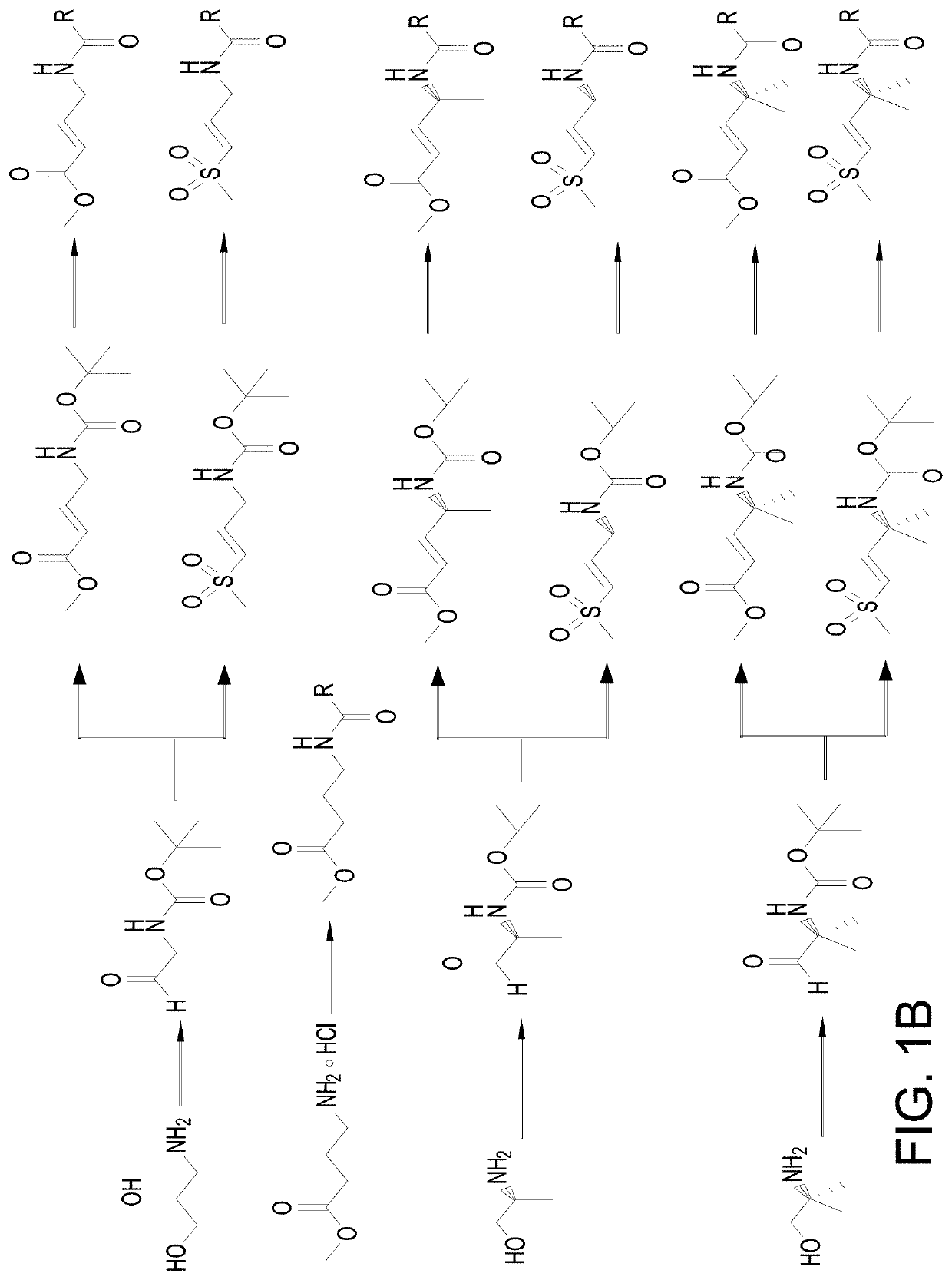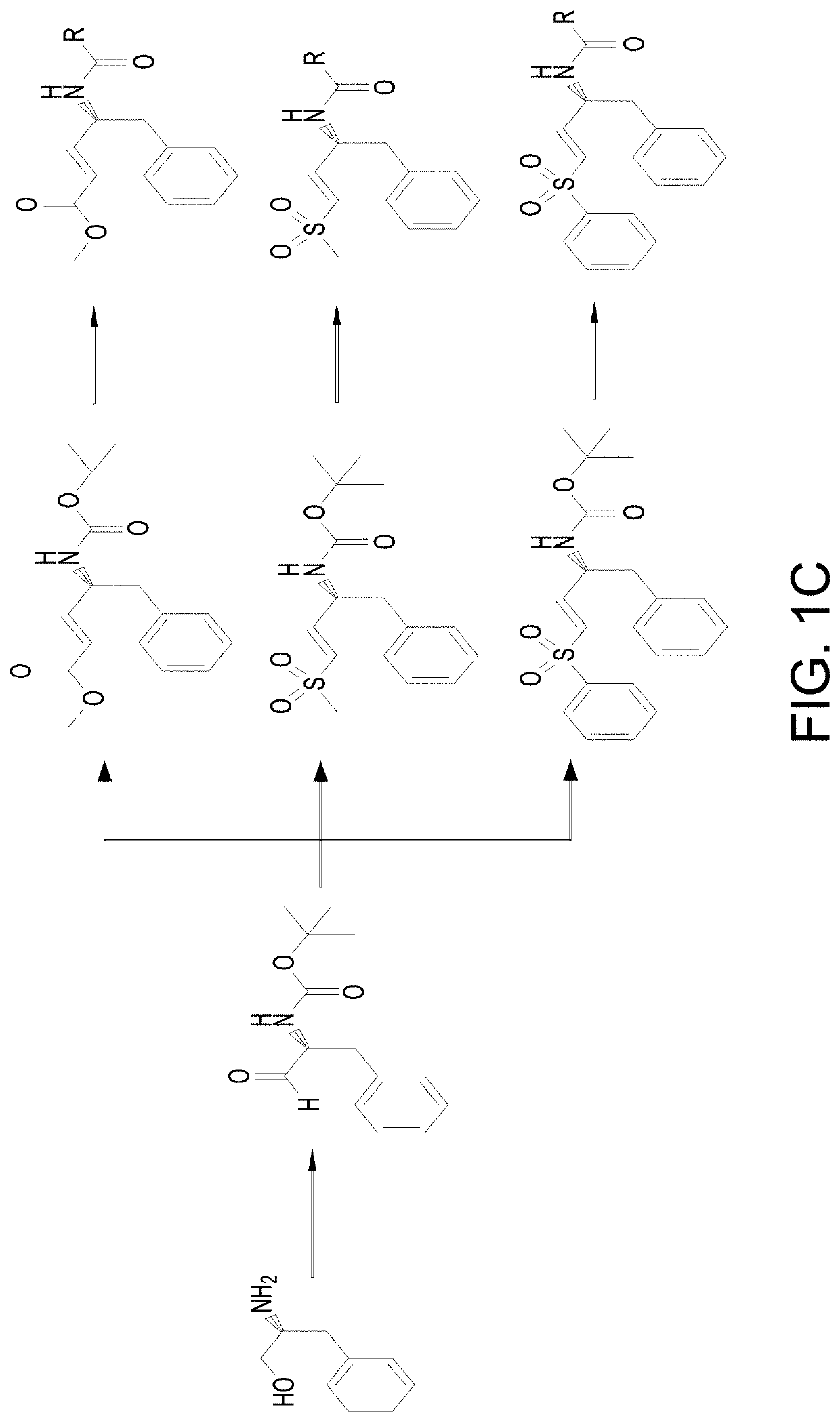Covalent inhibitors of equine encephalitis virus
- Summary
- Abstract
- Description
- Claims
- Application Information
AI Technical Summary
Benefits of technology
Problems solved by technology
Method used
Image
Examples
examples
[0100]1. Bioassays
[0101]a) Antiviral Assay:
[0102]Primary screen: HeLa cells were plated 24 hours before compound treatment at 2,000 cells / well in 35 μL of culture media / well in imaging 384 well assay plates (Aurora 384, IQ-EB, 384 IQ-EB / NB, 200 m clear, #1052-11130). Two hundred compounds were screened in 2 replicates at 4 final concentrations (0.24, 1.2, 6, and 30 μM) using 100×compound stocks in 100% DMSO stored on 384 well source plates. Compounds were diluted in media to generate a 10×intermediate concentration using the Perkin Elmer Janus Modular Dispense Technology platform with 384—tip head and 5 μL of diluted compound were transferred immediately into the assay plates containing HeLa cells. At least one control compound was also included for internal quality control. DMSO concentration in all wells was normalized to 1%. Two hours post compound treatment, assay plates were transferred to BSL-3 suites for VEEV (IC-SH3) infection (MOI=0.2, 10 μL of virus mix / well). Cells were f...
PUM
 Login to View More
Login to View More Abstract
Description
Claims
Application Information
 Login to View More
Login to View More - R&D
- Intellectual Property
- Life Sciences
- Materials
- Tech Scout
- Unparalleled Data Quality
- Higher Quality Content
- 60% Fewer Hallucinations
Browse by: Latest US Patents, China's latest patents, Technical Efficacy Thesaurus, Application Domain, Technology Topic, Popular Technical Reports.
© 2025 PatSnap. All rights reserved.Legal|Privacy policy|Modern Slavery Act Transparency Statement|Sitemap|About US| Contact US: help@patsnap.com



